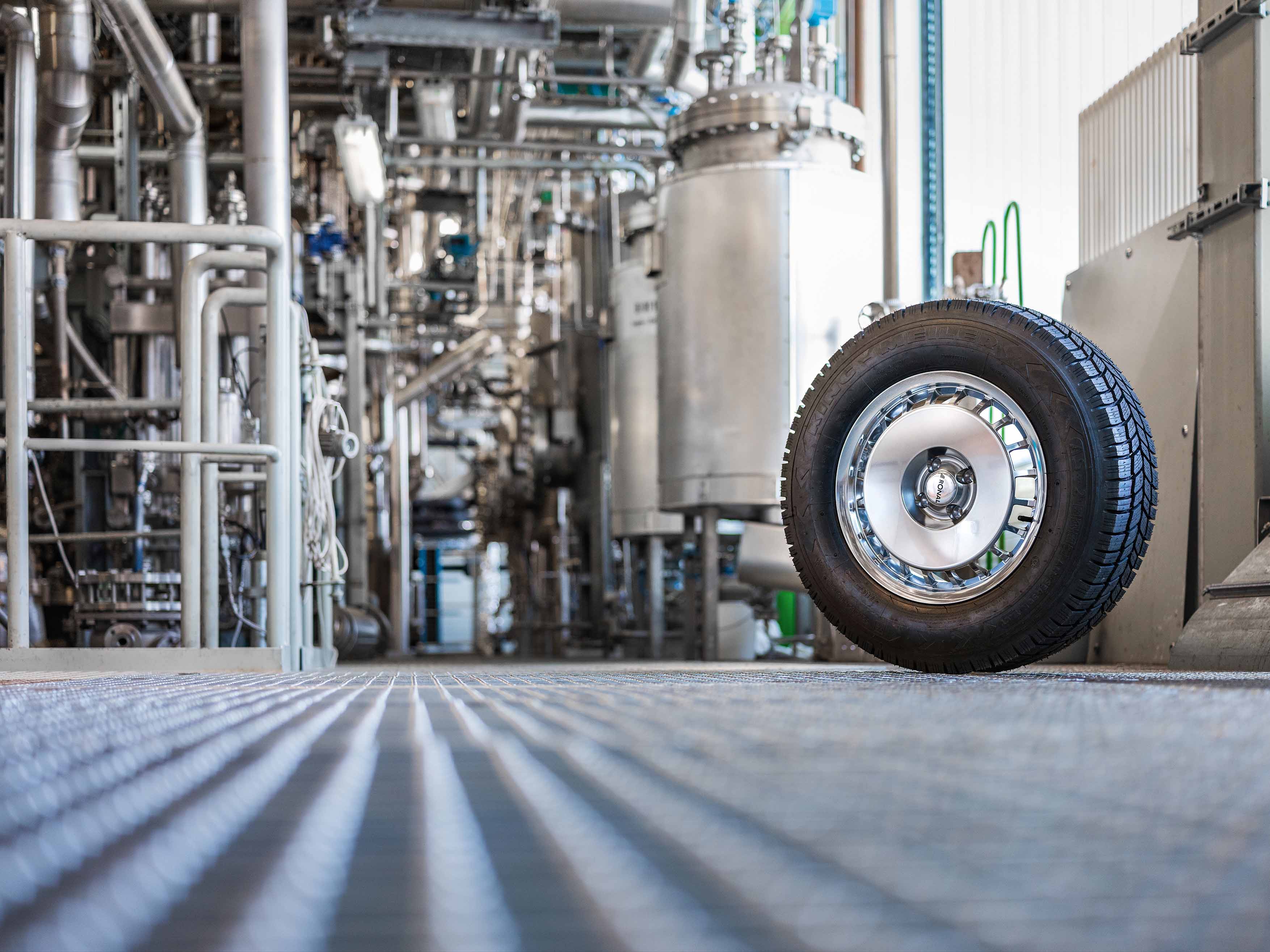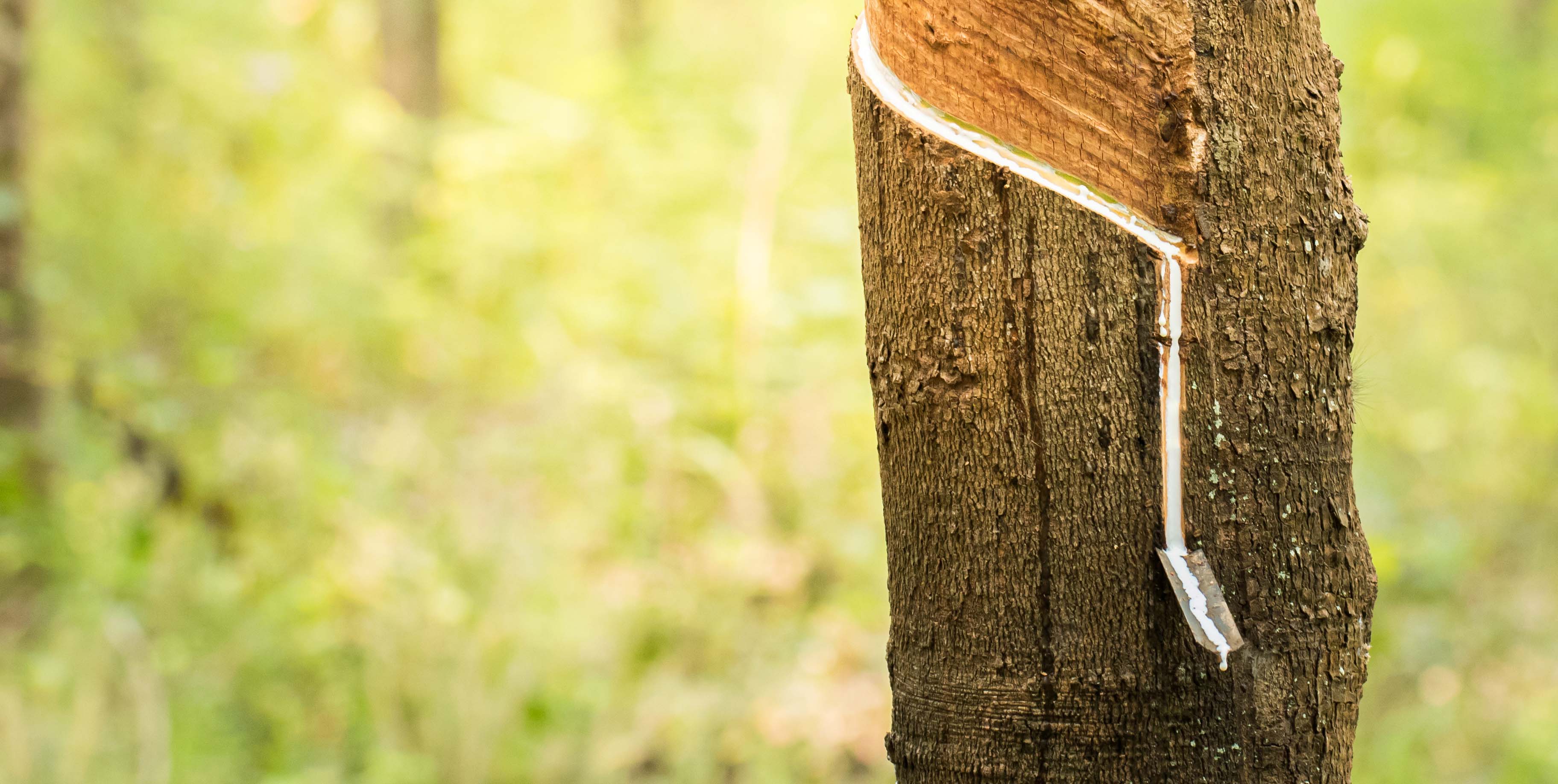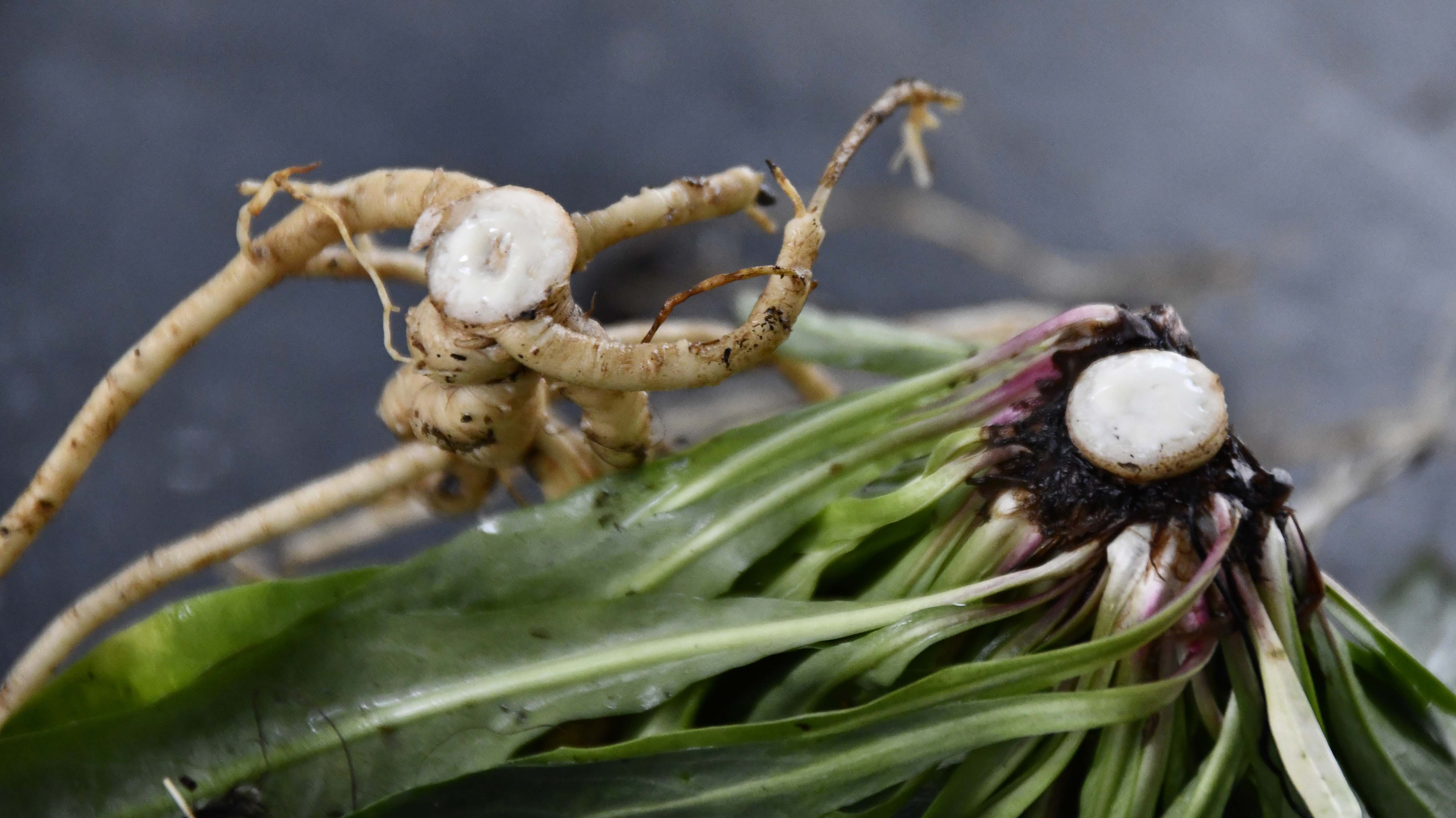Biomimetic synthetic rubber
In the research project "Biomimetic Synthetic Rubber - BISYKA," researchers uncovered the secrets of natural rubber. Although synthetic rubber has been produced and constantly optimized since the beginning of the 20th century, its mechanical properties cannot compete with the unique characteristics of natural rubber. A consortium of various Fraunhofer institutes therefore took up the challenge of investigating the causes of these valuable properties of natural rubber and transferring them to synthetic rubber. The product -first test tires- showed a decisively improved property profile in validated performance tests, for example around 30 percent less abrasion.


One of the core competencies of Fraunhofer IME in Münster is investigating natural rubber biosynthesis in dandelions. The researchers built on this to pursue the question which components in natural rubber are responsible for its unique characteristics, such as strain-induced crystallization. To do this, they first broke down the rubber from dandelions into its individual components: Poly(cis-1,4-isoprene), proteins and lipids. The lipophilic substances primarily comprise the subgroups of triterpenes/triterpenoids and phospholipids. They might have an emulsifying effect on the rubber particles that are the site of polymer biosynthesis and storage. The proteins present are characterized by their membrane activity, which means they interact with components of the cell membranes, for example, phospholipids. These interactions result in stabilization of the rubber particles.
Analyses of natural rubber samples from which the researchers removed the lipids and proteins have shown an impact on the unique mechanical properties of natural rubber. For example, when phospholipids are removed from natural rubber, elongation crystallization is significantly reduced. In the next step, the scientists added various amounts of the individual cofactors to the synthetic rubber and observed clear effects on elongation-induced crystallization. For example, even the addition of very small amounts (less than 1 percent) of certain phospholipids to defined compounds was effective.
In Münster, the experts therefore developed a production process for the desired accompanying substances that could be implemented on a large scale. This allowed the production of larger quantities of the biomimetic isoprene rubber and enabled the consortium to manufacture the first test tires with the new biomimetic synthetic rubber. In validated performance tests, these showed around 30 percent less abrasion without compromising on other quality characteristics. In the future, the use of "BISYKA" rubber in tire production could make a valuable contribution to minimizing the input of rubber abrasion into the environment.
With "BISYKA", the Fraunhofer-Gesellschaft has succeeded in transferring the unique biological properties of natural rubber to its technical counterpart synthetic rubber for the first time worldwide by bundling life science and engineering expertise.
 Fraunhofer Institute for Molecular Biology and Applied Ecology IME
Fraunhofer Institute for Molecular Biology and Applied Ecology IME

